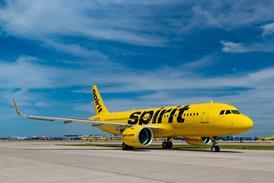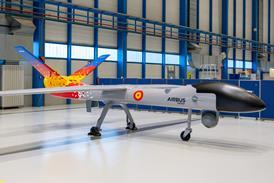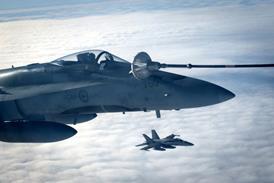A smaller industry is the most likely result of the Delta and Northwest Airlines bankruptcies, but carrier consolidation is still a distant prospect in the USA.
By the time the expected happened it was all but anticlimactic. Dual bankruptcy filings on 14 September within minutes of each other put nearly a quarter of US airline capacity in the protection of bankruptcy courts as Delta and Northwest gave in to the forces that had crushed them since late August.
The carriers gave the same reason: fuel. Just after its court filing, Northwest chief executive Doug Steenland explained succinctly that fuel was going up and revenues were rising minimally. He saw no way around the inevitability of both trends and had only one logical conclusion: bankruptcy protection. As Steenland said with regret-tinged pride: “We are a very analytic and empirical decision-making company here.”
Steenland said Northwest’s capacity could decline 5-6% year-over-year in the final quarter, while Delta, already pulling down its Cincinnati hub, told its bankruptcy judge it plans to accelerate fleet simplification, removing four aircraft types by the end of 2006.
It is on that goal of reduction that the industry pins its hopes. If the US industry cannot get smaller with the disappearance of one or another troubled carrier, then perhaps it will shrink by the individual actions of these carriers. One way or the other, if overall capacity goes down, fares and yields will perhaps go up, says Bear Stearns airline industry analyst David Strine.
He says: “Over the past 20 years, bankrupt carriers decreased capacity by 5% to 10% on average in the year following their filing.” If Delta and Northwest shrink by 7.5%, the mid-point of the historic pattern, Strine forecasts, 2006 domestic industry capacity goes from a 2% annual increase to flat, which is “potentially favourable for yields”. Supporting this hope-filled scenario, many see growth as likely almost solely on overseas routes. Delta’s international capacity is 24% of its system, compared with about 40% at Northwest, and its overseas growth is running at double-digit levels. It is also the only part of its network in the black.
In the short term some carriers will benefit. Raymond James and Associates analyst Jim Parker, and others, see AirTran, Atlanta’s rival to Delta, as the biggest certain winner. While Southwest and JetBlue would benefit from any significant Delta drawback from Florida, their aggressive growth plans do not depend on others shrinking.
The single largest pull-down of capacity in the short term would be the dissolution or liquidation of Independence Air, the former Atlantic Coast, which has lost over $365 million since it started in June 2004. The ex-United Express feeder at Washington Dulles is widely expected to suspend services. United would be the single largest beneficiary of an Independence exit, calculates JP Morgan’s Jamie Baker, who sees United easily winning $250 million of the $400 million in revenue that Independence would leave on the tarmac.
Domestic industry capacity may well decrease among the legacy carriers, but others are expanding. JetBlue begins to fly its 100-seat Embraer 190s in November, adding nine this year and 18 next year, while Spirit Airlines will have 35 Airbus A319s and A321s flying by 2007. Southwest takes delivery of 41 more 737-700s by the end of 2006 and AirTran will receive at least 24 737-800s next year, along with two 717s.
The other route to a diminished industry, and with it higher yields, is consolidation. Merrill Lynch analyst Mike Linenberg says he “would not be surprised if Delta borrows a page from the America West/US Airways playbook and emerges from bankruptcy in the form of a merger”. Some Wall Street observers have begun joking about the possibility of a merged carrier called “Delta Orient”. Northwest was Northwest Orient until the early 1990s.
Continental has previously discussed a possible combination with both Delta and Northwest. Any two of these three, and Delta and Northwest in particular, could win regulatory clearance to combine as long as competition authorities remain wary of geographic route and/or hub overlap, says Helane Becker of New York’s Benchmark Group. But she says that would be years away, at the end of the reorganisation.
This potential shake-out would be lengthy, given that Delta and Northwest filed before the imposition of new time limits on reorganisation. Some point to the United bankruptcy as an example, noting that it cut salaries by 45% and trimmed lease costs by 41%. But United still managed to lose $7.5 billion in the 33 months of its reorganisation.
DAVID FIELD/WASHINGTON
Source: Airline Business























